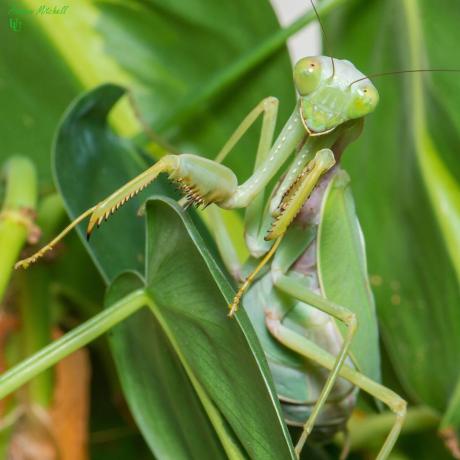

A large and robust mantid, that is easy to keep and rear. Ideal for novices or someone looking for an alternative to the more commonly available species.
| Origin | Southern China and Thailand |
|---|---|
| Environment | Rainforest |
| Suitability | Novice |
| Adult Size | Up to 12cm |
| Lifespan | Approx 1 year |
| Food Type | Crickets, Locusts, Fruit flies, Curly-wing flies |
The Rhombodera genus contains a group of Asian mantis commonly known as Shield Mantis, Hood Mantis and Leafy mantis. They are best known for their enlarged thorax (neck) that resembles a shield or leaf like structure.
Rhombodera megaera is usually green in colour and reaches an adult size of around 8cm.
Rhombodera megaera are found in southern China and Thailand.
Housing requirements differ depending on the mantid size. Keep small nymphs in 32oz plastic pots or similar. Keep large individuals in one of our praying mantis kits or a large plastic sweet jar. Give consideration to the ventilation you provide. Use fine netting over smaller pots and glue metal gauze in place in larger plastic containers. If you decide to use a plastic faunarium or glass terrarium instead, then you don’t need to worry, as they are already well ventilated.
Maintain temperatures between 22-26°C daytime, preferably with a nighttime drop. Keep humidity around 70-80%. Like most mantis species they are quite tolerant of being kept at normal household temperatures with no additional heating, as long as they’re kept out of direct sunlight or cold drafts. Humidity is often over emphasised with invertebrates and too much can have devastating effects. Misting the side of the enclosure and décor items 2-3 times a week with a hand sprayer is often more than adequate for this species.
Décor and substrate is a personal choice. You can use something as simple as a trailing piece of tissue down the side of the pot for them to climb on, or be creative and add lots of twigs, branches, live or artificial plants. Peat based substrates and mosses are commonly used on the floor of the enclosure and will obviously help with maintaining relative humidity.
Offer small nymphs fruit fly. Once they have reached 3rd-4th instar or above, try offering alternatives such as crickets, locusts and curly-wing flies. Larger nymphs and adults are best maintained on the larger sizes of feeder insects.